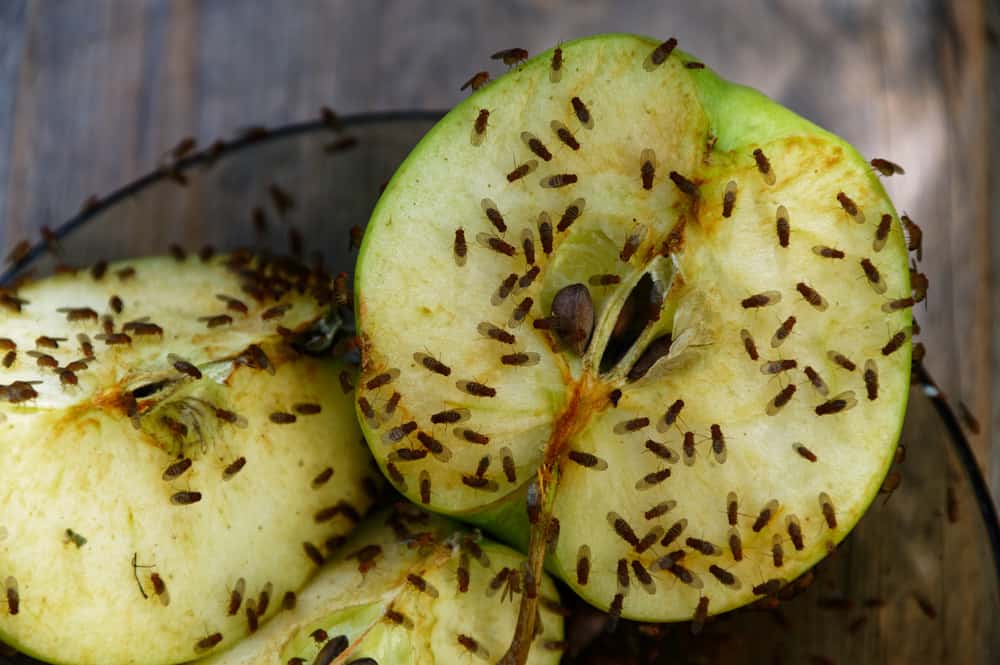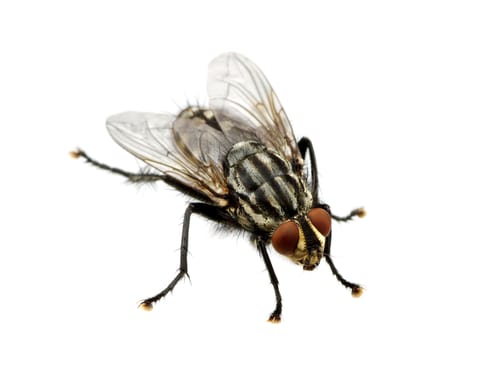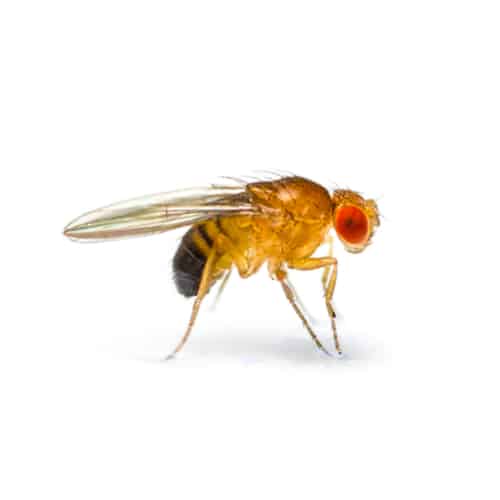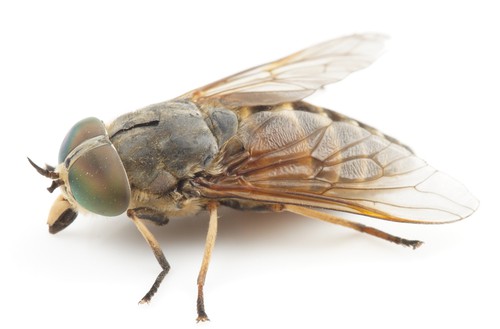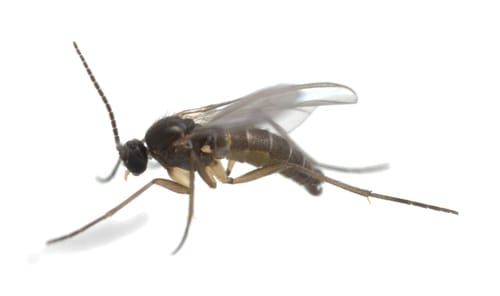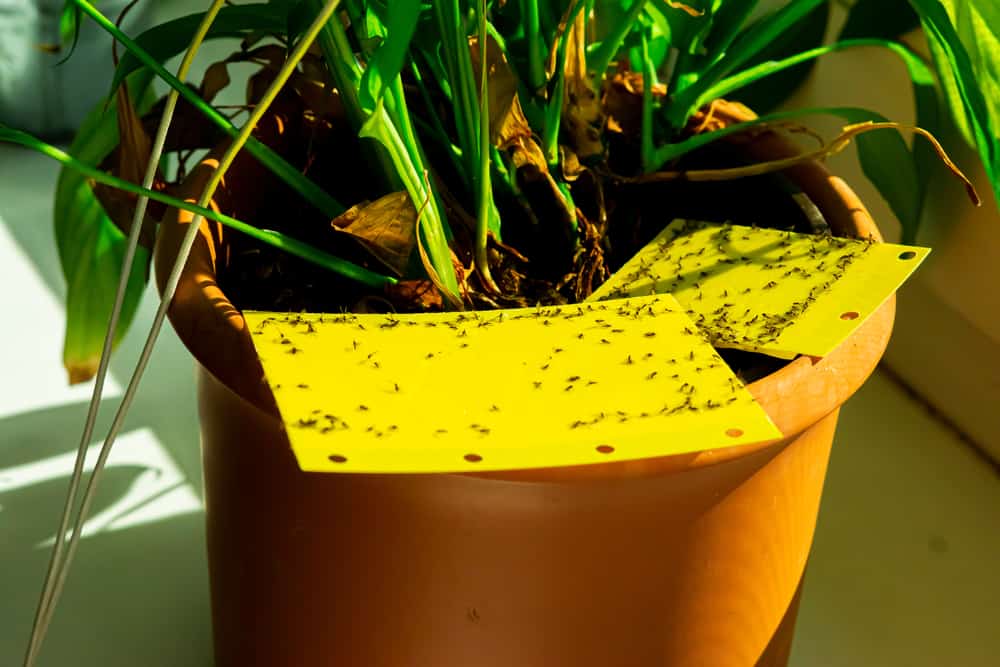Understanding flies’ diet is a great way to prevent an infestation. In this post, we tell you what flies eat and why having them in your home is dangerous, and give you tips that can help you get rid of these bothersome buzzers in your home and the surroundings. Read on.
What Do Flies Like to Eat?
Flies generally live off a liquid-based diet. Because their mouths are not designed to chew food, their tongues (also known as proboscis) enable them to suck up their food, thanks to their straw shape. They will eat any wet or decayed matter, but in particular, they will be attracted to animal waste and rotting matter because the smell is strong, thus easier to find.
When a fly finds something to eat, it uses the proboscis to inject digestive juices into the food to break it down into a liquid that it can drink. To understand how proboscis works, watch this video:
So, what foods do flies feed on?
Just like there are numerous species of flies, there are a host of food items that flies can feed on. Here is what the most common fly species eat:
- House flies: A housefly mostly feeds on sugar, flower nectar, and decaying matter. Sometimes it will also feast on the honeydew left behind by aphids.
- Fruit flies: These will normally be found feeding on the yeast that grows on decomposing fruits especially bananas and mangoes. They also love sugary substances like alcoholic beverages and fermented liquids.
- Bottle flies (blowflies): Where there is a carcass of a dead animal, you will always find bottle flies. In addition to eating, they will dig into the carcass and lay eggs, giving rise to more and more flies. Adult blow flies also feed on feces, garbage, and fresh meat.
- Cluster flies: A cluster fly generally consumes plant juices like flower nectar. If it can’t find these, it will eat decomposing organic matter.
- Horseflies: While all horse flies’ main source of food is honeydew and plant liquids, females require a blood meal to lay eggs. You will, therefore, mostly find them around livestock.
Harm Caused By Different Fly Species
Even though flies don’t live for so long, they are able to reproduce and multiply quickly and in large numbers and spread various diseases like malaria, tuberculosis, and salmonella, to name a few.
House Flies
A housefly doesn’t bite but it can transfer over 100 pathogens capable of putting your health at risk. And because, like all flies, they are notorious for walking over filth and rotten things, having them in your home means that you cannot leave your food uncovered because you don’t know where those small feet have been.
In their travels, house flies collect viruses, fungi, and bacteria, and spread them around, causing diseases to humans and pets. Some health issues that can be a result of houseflies include dysentery, tuberculosis, and food poisoning.
Fruit Flies
While fruit flies have historically not been linked to any specific illness, some experts argue that the flies may carry bacteria that cause food contamination.
Several studies have shown that the Mediterranean fruit fly, also known as Ceratitis capitata can carry and transmit Escherichia coli, a bacteria known to cause infections like cholecystitis, cholangitis, bacteremia, traveler’s diarrhea, and urinary tract infection.
Horse Flies
Unlike the two fly species we have discusses above, horse flies do not transmit any harmful bacteria. However, they do have really painful bites that can cause rashes or allergic reactions. They are persistent little creatures and won’t stop biting until they have had enough blood or have been killed.
Fungus Gnats
Fungus gnats are tiny flies that attack soil, potting mix, and other sources of organic nutrients and decomposition, causing problems in greenhouses, potted plants, nurseries, and interior plantscapes. Generally, they are more harmful to plants than they are to humans.
While adult fungus gnats won’t necessarily harm the plants, the larvae will burrow into the soil and chew on roots, causing stunted growth. In severe infestation, the larvae of fungus gnats can also kill the plants.
How to Get Rid of Flies
1. Eliminate Their Food Sources
Dirty dishes in the sink, open trash cans, and unlidded pet food can all invite flies. Check your house and do what is required to keep the flies at bay like cleaning any dirty dishes in the sink or replacing lids on trash cans, compost bins, and pet food bowls.
And don’t do it just once. If you are looking to keep your home fly-free, then you need to get into the habit of fly-checking regularly.
2. Seal the Entrance
Keeping flies out of your home can be challenging especially if you have a busy household where you have family members, pets, and guests going in and out.
But here is the most effective way to lock the nuisance bugs out; seal the entrance. Check windows and door screens for any damaged mesh and repair it right away. Add caulk around windows to seal spaces and small cracks where flies are likely to enter. It would also help to keep attached garage or cellar doors closed at all times.
3. Use Light to Lure Them Out
Flies always go where there is light. So, if you have a serious infestation in your home, try luring them to light to get them out.
For example, when it is bright outside, shut the door that services the room where the bothersome buzzers are and close all blinds and curtains except for one tiny gap that lets light in. Keep that window open. Flies will naturally go to the light, which will eventually lead them outside.
4. Use Houseplants
Plants not only keep your home fresh; they are also the first line of defense against flies. An indoor garden that has mint, basil, and lavender can be a powerful anti-fly arsenal. Set some plants near doors and windows and you will likely not encounter fly problems.
5. Set Up a Fly Trap
Build a simple trap to lure and capture flies and other unwanted bugs. All you need is a plastic wrap, a plastic container, and bait. Your fly bait can be any foods that flies enjoy such as ripe fruit, vinegar, or meat. Set up the trap somewhere in a corner to draw and imprison the flies.
If building a DIY trap is too much work for you, visit any big box store near you and purchase a ready-to-go fly trap.
6. Keep Your Pet’s Litterbox Clean
Your pet’s litterbox could attract flies and become their breeding ground if you don’t clean it soon enough. Flies like to lay their eggs on poop and can produce up to 200 eggs at a time.
And because fly eggs hatch in less than 20 hours, this means that for every pile of poop you leave unattended, you will have 200 flies tomorrow. To avoid this, scoop your pet’s poop and clean the litterbox on a daily basis. Check their cages and clean these as well.
7. Clean Food Spills Right Away
Flies are drawn to fruits, foods, and anything else they can feed on in your home. They are particularly attracted to damp or rotten foods. As such, whenever you have food spills, wipe them up right away.
8. Keep the Compost Heap Away From Your House
Compost heaps are excellent breeding spots for flies. In the spirit of keeping the annoying insects at bay, it will help to have your compost heap away from your house. Also, turn it frequently so it doesn’t get too moist, as this could promote the growth of flies too.
9. Drain Any Water Near Your Home
In addition to compost, flies love wet places and stagnant water. If you have been having fly problems and you can’t figure out why, check to see if there is any undrained water nearby.
While there is nothing much you can do if you live near a swamp, lake, or pond, you can drain any water that gathers near your house in buckets, trash can lids, or inside old tires. Getting rid of this water will not only help get rid of flies; it will reduce mosquitoes too.
10. Try Insecticides and Repellents
If you have tried all the above methods and still have flies at your home, you may want to go for insecticides and repellents.
Look for products containing permethrin; these are the most popular in fly-control, as they have been found to be quite effective.
However, keep in mind that most insecticides are designed for outside use. So if your infestation is indoors, you may want to look for a safer, non-toxic alternative or make your own repellant using the guidelines provided in this video:
Summary
Flies can be a nuisance, not just because they contaminate our foods but also because the majority carry bacteria and viruses that can be harmful to our health. Luckily, by keeping our homes clean, draining any standing water, and using insecticides, we can be able to permanently get rid of flies.
